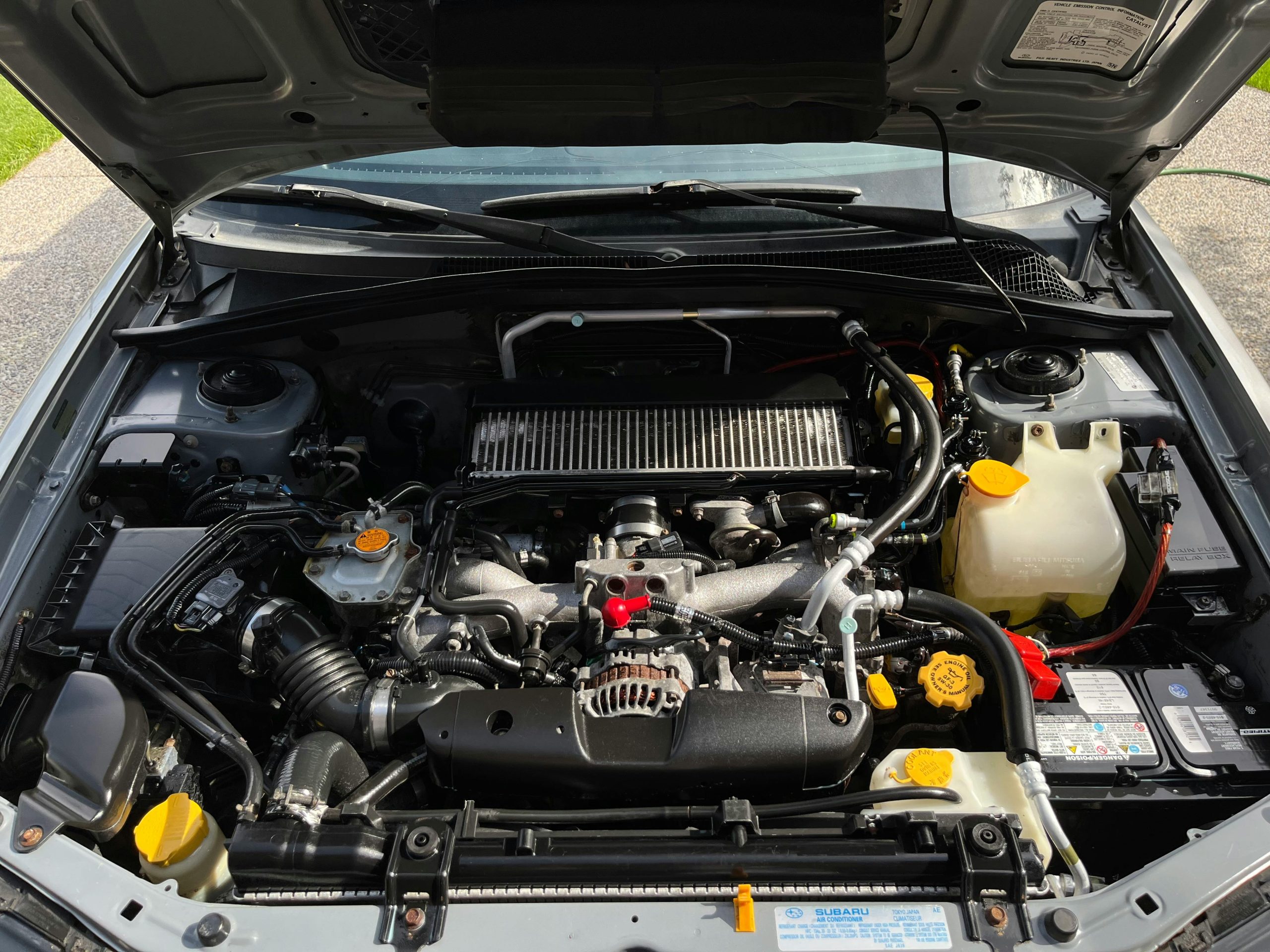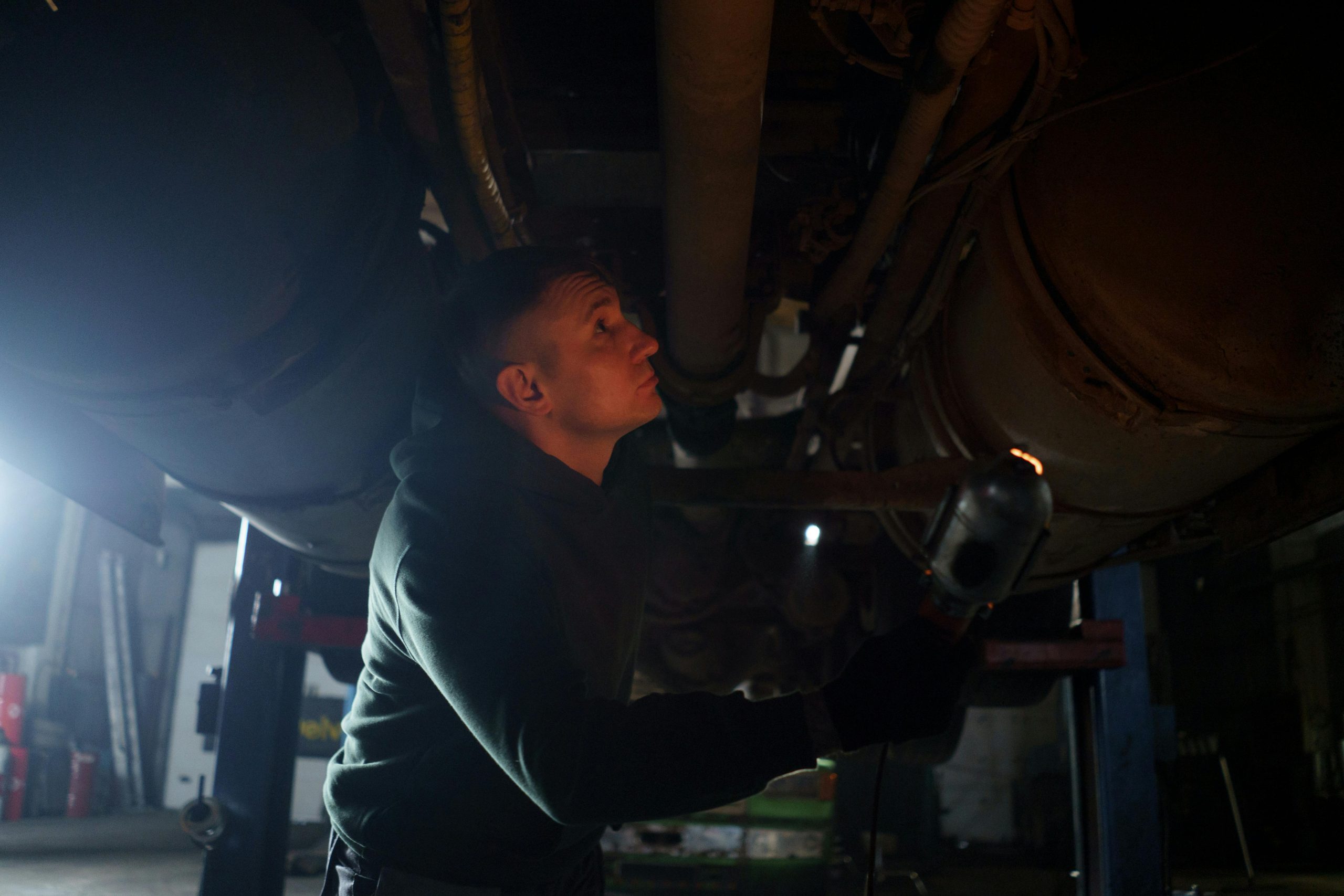When you spot a pool of bright green or orange liquid under your car, you will likely see a telltale of a radiator leak. This isn’t just about messy drips; it’s a warning that your car’s cooling system might be failing, which, if ignored, can lead to serious engine damage.
You need to understand what these symptoms can mean for the health of your car and how quickly you should react. Ignoring these signs can be costly, so let’s explore what steps you should take next to ensure your vehicle remains in top running condition. What will happen if you don’t?
Identifying Coolant Leaks
To identify coolant leaks in your car, look for brightly colored puddles such as green, orange, blue, pink, or yellow beneath the vehicle. These visible puddles are telltale signs of a coolant leak, signaling an issue within your car’s cooling system.
As you become familiar with these indicators, you’ll be better equipped to take timely action, guaranteeing your vehicle remains in top condition.
Consistently needing to top off the radiator fluid can also point to a coolant leak. It’s important to check the radiator fluid level regularly; a decrease in this level can often go unnoticed until it causes significant engine issues.
Make it a habit to inspect the fluid level, preferably when the engine is cold for an accurate reading. This practice not only helps in early detection of leaks but also extends the life of your engine.
Inspecting for cracked hoses is another proactive step you can take. These hoses are essential components of the radiator system and over time, they can degrade and develop cracks leading to leaks. If you spot any abnormalities, such as swelling or visible cracks, it’s time to explore replacements.
Engaging with these maintenance activities fosters a deeper connection with your vehicle’s health and ensures you’re never caught off guard.
Common Leak Locations
As you inspect your vehicle for radiator leaks, focus first on hose connection points, which often fail due to clamp wear or improper fitting.
Hose Connection Points
Hose connection points often develop leaks due to deterioration or loosening, necessitating regular inspections and maintenance to prevent coolant loss and engine overheating.
When you delve into the details of your car’s radiator system, focusing on these vulnerable junctures where hoses meet other components is essential. These are typical sites where the integrity of the coolant pathway can be compromised.
To safeguard your engine’s health, examine these hose connection points for any signs of wear or cracks. It’s not just about spotting a leak; it’s about understanding why it’s happening.
The clamps that secure these hoses can become loose over time. This seemingly small issue can significantly drop coolant levels, affecting your engine’s temperature regulation.
You should routinely check the tightness of these clamps and the condition of the hoses during regular maintenance. If you notice any softness or brittleness in the hoses or if the clamps no longer hold as they should, it’s time for a replacement.
Radiator Core Vulnerabilities
The radiator core is integral to maintaining your car’s cooling efficiency, but it’s susceptible to various damage and wear. Common leak locations include the cooling fins, plastic or welded seams, filler necks/spouts, and drain petcocks. These vulnerable areas are often the first to show signs of coolant leaks due to their exposure to constant temperature fluctuations and environmental factors.
To tackle these leaks, start by carefully inspecting the radiator components. Look for any signs of moisture or wetness around the radiator core, especially at the connections and seams. Corrosion or physical damage can compromise the integrity of these parts, leading to leaks. If you spot any deterioration, it’s essential to act swiftly.
Water Pump Seals
Regularly examining your car’s water pump seals is important, as these components are common sources of radiator leaks. These seals, essential for maintaining the integrity of the cooling system, can degrade over time due to thermal stress and mechanical wear. When these seals fail, they lead to coolant loss, which, if unchecked, results in overheating—a major risk factor for engine damage.
To identify a failing water pump seal, watch for coolant puddles under the front of your car. This visual clue is often the first sign of trouble. Don’t ignore it; a small leak today can escalate into a costly repair tomorrow. If you spot these telltale coolant puddles, it’s time to act to protect your vehicle’s engine and your peace of mind.
Symptoms of Radiator Failure
It’s vital to monitor your coolant level and check for any signs of a drop. A rising temperature gauge can also alert you to potential issues, signaling that the radiator isn’t effectively cooling the engine anymore.
Continuously monitor the state of your radiator components. Look for visible signs of radiator leaks, such as wet spots or dripping coolant around the radiator and connected hoses. These are clear indicators that your radiator’s integrity may be compromised. Remember, engine overheating is a significant risk if these issues aren’t addressed promptly.
Consequences of Ignoring Leaks
When you overlook a radiator leak, you’re setting your car up for severe engine overheating, which can warp engine components and ultimately lead to engine failure.
Engine Overheating Risks
Neglecting radiator leaks often leads to engine overheating, which can cause serious damage such as a blown head gasket. When you see signs of a leak in your coolant system, it’s vital to address them immediately to maintain your engine’s operating temperature within safe limits. If you ignore the signs, the escalating engine temperature can compromise your vehicle’s performance and safety.
The coolant system plays a pivotal role in controlling your engine’s heat. A leak leads to a reduced amount of coolant, impairing the system’s ability to regulate the engine temperature. This deficiency results in overheating risks that can quickly escalate into more severe issues.
Increased Repair Costs
Continued disregard for radiator leaks jeopardizes engine health and substantially amplifies repair costs. When you ignore coolant leaks, you’re risking progressive damage that can escalate from a simple fix to a major overhaul. Addressing a radiator leak early keeps the repair straightforward and cost-effective.
If coolant leaks aren’t addressed, they can lead to engine overheating. Overheating is a critical condition that can cause severe damage such as blown head gaskets or warped cylinders. These issues aren’t only technically complex but also hit your wallet hard. Replacing a head gasket, for instance, involves labor-intensive disassembly and can lead to significant downtime for your vehicle, translating to lost time and productivity.
Immediate Steps to Take
When you notice symptoms of a radiator leak, immediately check your coolant level and its color for any signs of contamination or depletion. A drop in coolant level or a murky appearance can indicate a serious issue. Investigating further is essential if you see visible puddles of coolant under your vehicle. These puddles indicate that coolant is escaping your system and needs immediate attention.
Next, keep a close eye on your engine temperature gauge. Any sudden rises or unusual fluctuations could signal that your radiator isn’t performing at its best due to a leak. This is a critical warning sign as overheating can lead to significant engine damage.
Act swiftly if you detect a sweet smell or see steam emanating from the engine. The sweet odor is typically associated with ethylene glycol, a key component of antifreeze, which suggests a coolant leak. On the other hand, steam might indicate that the leaking coolant is hitting hot engine parts and evaporating.
Preventative Maintenance Tips
To guarantee your vehicle remains in peak condition, regularly schedule checks for coolant levels and signs of leakage.
Monitoring your radiator coolant isn’t just about topping up; it’s about understanding its role in your car’s ecosystem. Proper coolant levels are your first defense against overheating issues, which can severely damage engine components.
Implement a routine of inspecting for visible leaks, especially after long drives or when your vehicle has been under more stress than usual. Visible leaks are often indicators that the cooling system may be compromised, risking overheating and engine failure. If you spot any anomalies, addressing them promptly isn’t just essential maintenance it’s a proactive measure to safeguard your car’s longevity.
Conclusion
Remember, ‘a stitch in time saves nine.’ Addressing radiator leak symptoms promptly can prevent severe engine damage and costly repairs.
Check coolant levels regularly and inspect the radiator and hoses for signs of leakage. If you spot a leak, immediately fix it or consult a professional.
Incorporating routine maintenance into your car care practices guarantees your engine remains in peak condition, safeguarding your vehicle’s longevity and performance.



